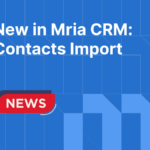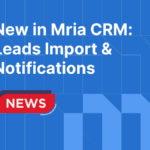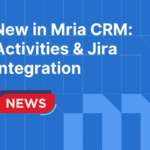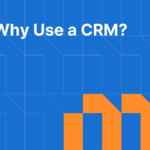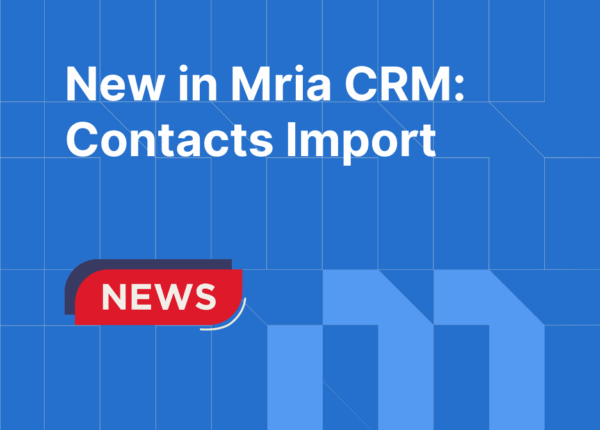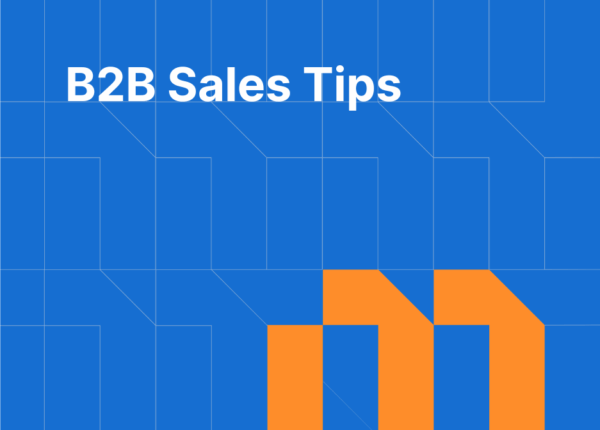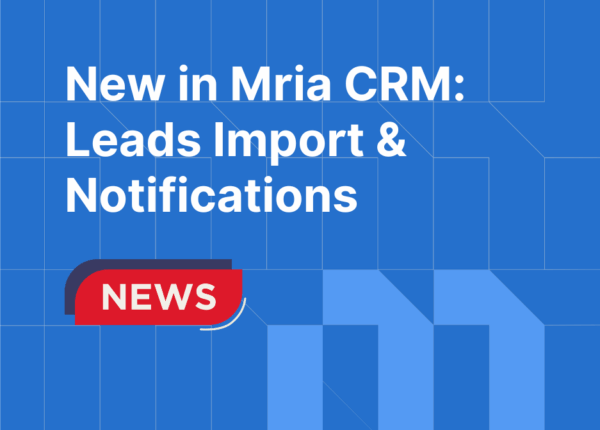Customer Relationship Management (CRM) is more than just a tool, it’s a structured process for managing interactions with customers across their lifecycle. When implemented strategically, the customer relationship management process helps businesses improve satisfaction, increase retention, and drive revenue.
This article explores the CRM process, breaks down the CRM sales process steps, and explains how each phase supports long-term business growth.

Table of Contents
What Is the Customer Relationship Management Process?
The customer relationship management process can be described as a series of strategic actions and workflows designed to attract, engage, convert, and retain customers. These steps are usually supported by CRM tools that help teams organize data, automate communications, and track progress.
In simple terms, the process of customer relationship management enables businesses to move beyond ad-hoc customer interactions and adopt a proactive, data-driven approach to managing relationships.
If you’re new to the concept of CRM, you may want to read our article on what is CRM before diving into the process in detail.
What Is the Goal of the Customer Relationship Management Process?
The ultimate goal of any customer relationship management (CRM) process is to build strong, long-term relationships with customers that result in sustainable business growth. It’s not just about making a sale. It’s about creating consistent, valuable experiences that encourage customers to stay, buy more, and recommend your business to others.
Key Objectives of the CRM Process
A well-structured CRM process helps businesses:
- Improve customer satisfaction by understanding needs and solving issues efficiently
- Increase retention by maintaining ongoing communication and support
- Drive repeat business with relevant follow-ups, upselling, and cross-selling
- Encourage referrals and customer advocacy
- Personalize communication across the entire customer journey
- Maximize customer lifetime value through long-term engagement
The customer relationship management process aligns all teams around one goal: delivering value to the customer. When marketing, sales, and support follow the same process, they create a consistent experience across all touchpoints. This builds trust, strengthens relationships, and helps the business grow through better customer outcomes and stronger loyalty.
Why a Strong CRM Process Drives Better Business Results
The customer relationship management process helps companies build a strong operational foundation that supports growth, improves collaboration, and ensures a consistent customer experience. It connects people, systems, and workflows into one unified structure that guides how teams engage with leads and customers.
A well-structured CRM process brings clarity across departments and makes it easier to scale customer-facing operations.
Connecting Business and Technical Teams with Customers
A clearly defined CRM process ensures that all teams involved in the customer journey work from the same information. This includes sales, marketing, support, and technical teams such as developers, product managers, or implementation specialists.
With shared access to the same CRM system:
- Marketing understands which channels generate qualified leads
- Sales tracks every interaction and knows exactly where each deal stands
- Support has full context on the customer’s background and needs
- Technical teams are informed about promised features, delivery timelines, and any technical constraints or support cases
This level of alignment prevents delays, avoids duplicated efforts, and helps all teams provide a smooth and coordinated customer experience.
Creating a Scalable and Repeatable Sales Process
A documented CRM sales process makes it easier to turn successful actions into a consistent system that others can follow. It provides clear steps for each stage of the customer journey, allowing your team to operate more efficiently and predictably.
Key benefits include:
- Automation of repetitive tasks like emails, follow-ups, and reminders
- Accurate forecasting using up-to-date pipeline and deal data
- Easier onboarding of new team members with a structured sales approach
- Consistent communication and experience for every lead and customer
When your CRM sales process is clearly defined and supported by the right tools, your business can grow faster while maintaining control and quality.
Customer Relationship Management Process Flow
The customer relationship management process flow typically includes the following steps:
- Lead Generation
- Lead Qualification
- Customer Engagement
- Opportunity Management
- Sales Closure
- Customer Onboarding
- Support and Retention
- Loyalty and Advocacy
Let’s explore each phase in more detail.
Customer Relationship Management Process Steps
1. Lead Generation
The first stage in the CRM sales process is identifying potential customers. This could happen through marketing campaigns, website visits, referrals, trade shows, or outbound outreach.
Modern CRM systems automatically capture and store lead information, such as names, emails, or company names, so that sales teams can start working with structured data from the start.
2. Lead Qualification
Once leads are captured, the next step is to determine whether they fit your ideal customer profile. This step in the customer relationship management process involves evaluating factors like:
- Budget
- Industry
- Company size
- Decision-making power
- Timeline
Qualified leads are moved forward; unqualified ones are either nurtured or discarded.
3. Customer Engagement
In this stage, communication becomes the priority. Sales and marketing teams collaborate to provide value through personalized outreach, content, or consultations.
The goal of this step in the CRM process is to build trust and ensure that the lead understands your offering’s relevance to their needs.
4. Opportunity Management
Once the lead shows buying intent, they become an opportunity. This phase in the CRM sales process includes:
- Creating deals or opportunities in the CRM
- Tracking stages (e.g., proposal sent, demo booked)
- Assigning owners and setting reminders
CRM systems provide real-time visibility into the pipeline, ensuring sales managers can forecast accurately.
5. Sales Closure
After negotiations, follow-ups, and final discussions, the deal is either won or lost. In a strong customer relationship management process flow, even lost deals are logged with reasons for later analysis and improvement.
For won deals, a seamless handover to the onboarding or support team is critical.
6. Customer Onboarding
This stage ensures that new customers start seeing value from your product or service quickly. It may involve product setup, user training, documentation, or regular check-ins.
This step in the customer relationship management process helps reduce churn and improve customer experience early in the lifecycle.
7. Support and Retention
Once onboarding is complete, ongoing support plays a vital role. A mature CRM process includes mechanisms to:
- Track support tickets
- Log issues and resolutions
- Collect feedback
Engaged customers are more likely to stay, buy again, and refer others.
8. Loyalty and Advocacy
The final phase of the CRM sales process focuses on turning satisfied customers into brand advocates. This might include referral programs, case study invitations, or customer community building.
Satisfied customers contribute to new revenue at a lower cost than acquiring new leads, closing the loop on the CRM process flow.
How CRM Software Supports the CRM Process
CRM software plays a central role in making the customer relationship management process work. It is not just a place to store customer data. A good CRM platform helps teams manage the full process, from first contact to long-term customer loyalty.
The right CRM tool supports every stage of the CRM process flow by organizing data, tracking progress, automating routine tasks, and helping teams collaborate effectively. It ensures that your CRM process steps are followed consistently and can scale as your business grows.
Core Capabilities of CRM Software
Modern CRM systems offer a wide range of features that directly support each part of the customer relationship management process. These include:
- Lead and deal tracking
Keep all lead, customer, and deal information in one place. View complete histories, communication records, and current deal stages. - Email and task automation
Automate follow-up emails, reminders, handoffs, and internal tasks to save time and ensure nothing is missed during the CRM sales process steps. - Activity logging
Record every customer interaction, including calls, emails, meetings, and support tickets, so anyone on the team can pick up where another left off. - Sales pipeline visualization
Track opportunities through each stage of the pipeline. Understand which deals are close to closing and where leads are getting stuck. - Reporting and performance metrics
Measure how well your CRM process is performing with dashboards and reports that show win rates, sales cycle length, conversion rates, and team activity.
Choosing the Right CRM Platform
Your CRM system should align with your business processes, not force your team to change how they work. Look for a platform that supports your specific CRM sales process, matches your internal workflows, and offers the flexibility to evolve as your process improves.
There are many CRM tools available, from standalone platforms to industry-specific solutions. If your team already works in Jira, Mria CRM is a strong choice. It’s built natively for Jira and supports the entire customer relationship management process flow, from lead generation to onboarding, support, and retention, without switching between systems.
Still deciding between CRM and ERP platforms? Read our guide on CRM vs ERP to compare their roles and choose the right approach for your business.
How CRM Process Steps Work Together
Every part of the customer relationship management process plays a role in guiding potential and existing customers through their journey. When your CRM process steps are clearly defined and connected, your business becomes more efficient and customer-focused.
With a structured approach in place:
- Teams collaborate more effectively
- Information moves smoothly between stages
- Customers receive timely and relevant communication
- Results improve across sales, support, and retention
Each step supports the next, creating a complete CRM process flow that drives long-term business success.
Common CRM Process Mistakes and How to Avoid Them
Even with the right tools, the CRM process can fail if it is not properly implemented or maintained. Below are some common problems businesses face and how to avoid them.
No Clear CRM Process Steps
Without a clearly defined structure, teams rely on individual judgment and inconsistent workflows. Define your customer relationship management process steps and make sure they are documented and shared with everyone involved.
Disconnected or Inaccurate Data
Outdated or fragmented customer information leads to mistakes and missed opportunities. Use a CRM system that centralizes data and keeps it accurate across all stages of the process.
Poor User Adoption
Even the best CRM process will not deliver results if the team does not use it. Choose a CRM tool that fits into existing workflows and is easy to adopt across all departments.
How to Improve Your Customer Relationship Management Process
A successful CRM process is not something you set once and forget. It needs regular attention, refinement, and alignment with your evolving business goals and customer expectations.
Whether you’re just getting started or already using a CRM system, the following steps can help you improve the effectiveness of your customer relationship management process.
Audit Your Current CRM Process
Start by reviewing how your CRM process works today. Look at:
- How leads are captured and qualified
- How deals are created, tracked, and closed
- How communication is managed at each stage
- How support and follow-up are handled after the sale
Map your process visually or in your CRM system to identify gaps, overlaps, and delays.
Gather Input from All Teams
CRM success depends on collaboration. Talk to team members from sales, marketing, support, and technical teams to learn:
- Where they lose time or miss information
- What’s working well in their current workflows
- What tools or steps feel unnecessary or repetitive
This helps ensure that your improvements are grounded in real daily work, not assumptions.
Analyze CRM Performance Data
Use your CRM’s built-in reporting tools to review:
- Conversion rates at each stage of the sales pipeline
- Average sales cycle length
- Response and follow-up times
- Retention and churn metrics
Look for patterns. Where do leads drop off? Are there long delays between stages? Are follow-ups happening too late?
Standardize and Document the Process
Once you identify what needs to change, create clear guidelines. Define:
- The key CRM sales process steps
- Who is responsible for each stage
- What tools and actions are used at each point
- When and how handoffs happen between teams
Document this in a format that’s easy to access and update (like a shared Confluence page or CRM playbook).
Automate Where It Makes Sense
Use your CRM to reduce manual work by automating:
- Lead assignment based on source or territory
- Email follow-ups for inactive leads or onboarding sequences
- Reminders and task creation for next steps
- Alerts for stalled deals or overdue responses
Automation should save time and support your process, not replace thoughtful interactions.
Improve Data Quality
A clean CRM is a useful CRM. Create routines or automations to:
- Remove duplicates and outdated contacts
- Fill in missing deal information
- Validate email addresses and phone numbers
- Regularly review and archive inactive leads
Good data improves reporting accuracy, segmentation, and decision-making.
Train Your Team Regularly
CRM processes only work when people follow them. Offer regular training and quick-reference guides that:
- Explain the purpose and structure of your CRM process
- Show how to use your CRM system efficiently
- Highlight new features or automation updates
- Answer common questions from new and existing team members
Make it easy for everyone to stay aligned.
Stay Open to Feedback and Adjust
The best CRM processes evolve over time. Set a recurring check-in (monthly or quarterly) to:
- Review CRM performance metrics
- Collect feedback from users
- Update automation rules or pipeline stages as needed
- Realign the process with changes in your product, market, or team
Continuous improvement helps keep your CRM process effective and relevant.
Summary and Next Steps for Your CRM Process
Every business has unique customers, teams, and workflows. That’s why your CRM process should be flexible enough to fit your needs, but structured enough to keep everyone aligned.
Start with a clear plan. Keep your process simple at first, then refine it as you learn what works best for your team and your customers. The most effective CRM strategies are the ones that evolve over time, based on real data and real experience.
A CRM system can support your goals, but it’s the process behind it that drives long-term success.
